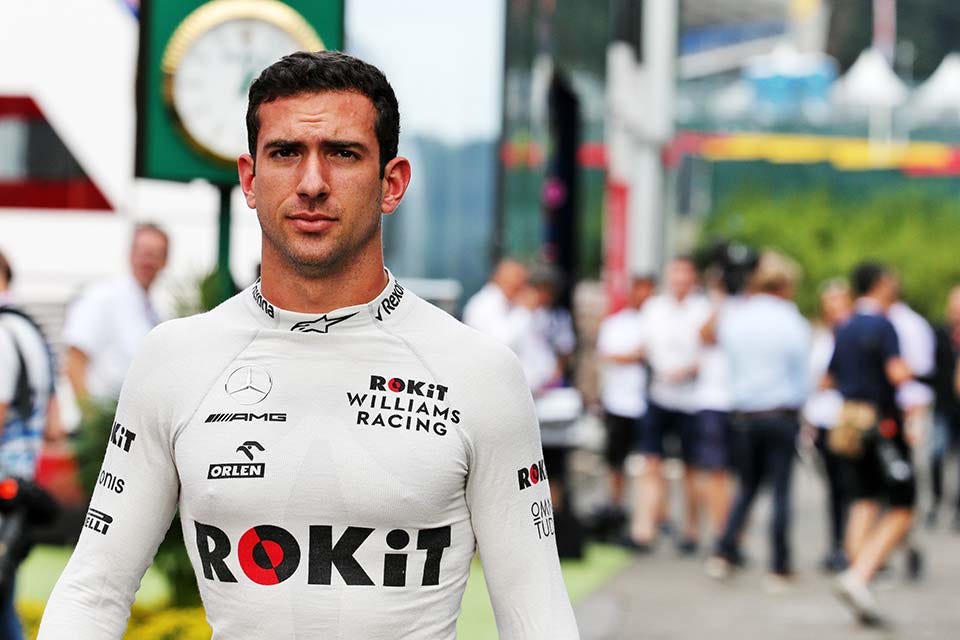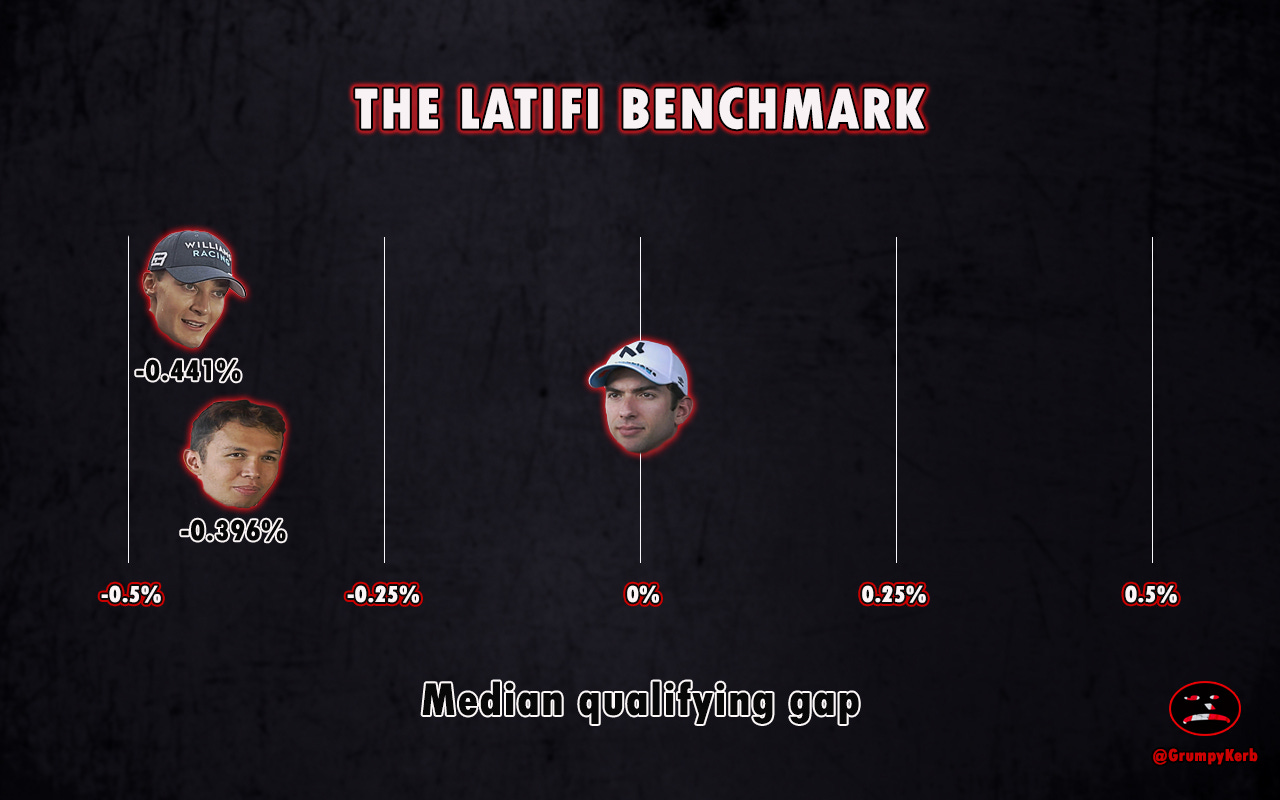It’s safe to say Nicholas Latifi’s career in Formula 1 won’t rank among all-time great, good, or even so-so. The Canadian born driver, even though he had a moment of shine: topping the last practice session at Hungaroring in 2022, is mainly remembered for poor form and memes.
Shame he’s not remembered more for his remarkable honesty with himself, everyone who listened him on the Beyond the Grid podcast is aware of. Taking uncomfortable truth about yourself on the chin is a sign of character Latifi undoubtedly has. Kudos to him.
The Canadian also has a history of being teammates with George Russell and Alex Albon during his stint at Williams. That, through a simple cross comparison, can give us a hint who between the two is faster over a single lap.
How It Was Done?
The qualifying gaps between Latifi and his teammates were converted into symmetrical percentages (meaning the numbers won’t change regardless whether Latifi or his teammate will be used as a benchmark) and then medians were calculated.
For this analysis only the best times were taken from parts of qualifying both teammates participated in. For example: Latifi and Russell made Q2 at Zandvoort in 2021, but the Canadian had driven his fastest lap in the previous segment, therefore his Q1 time was used. In overwhelming majority of cases the best times were set in the same Q.
What’s the reason for this approach? Well, when the current qualifying format was introduced in 2006, we still had refueling in Formula 1 and in Q3 teams had to ran their cars fueled for the first stint in the race. That led to differences in weight between teammates. For example in 2007 Raikkonen generally carried more fuel than Massa. A lighter car is faster. Therefore Q3 times weren’t the most representative. The approach I’ve used allows to bypass this issue and select the best times, usually set in Q1 and Q2 on “empty tanks.” Furthermore, in my view, a representative means when drivers perform their best.
Wet sessions were excluded. For the purpose of this analysis, a session is considered wet when teams use at least intermediates in one of its parts. So, for example, this year’s qualifying for the Hungarian Grand Prix as per the definition is dry, because, even though there was a little bit of rain in Q1, slicks easily could handle it.
Russell-Latifi median was calculated from 34 sessions and Albon’s equivalent from 15.
63 vs. 23
The cross comparison show Russell as the faster driver by 0.045%, which translates to 0.038 seconds on a 1:25 lap. Therefore the cross comparison suggests their qualifying pace is closely matched.
Of course this applies to 2020-21 Russel and 2022 Albon. There is no guarantee that 0.045% margin is still true in 2024. Obviously driver performance is not static. It varies, improves or diminishes with time. Given the age of both drivers and their career paths, it’s not a baseless assumption to think that Russell and Albon have improved and their rate of improvement hasn’t necessarily been equal.
Performance not being static applies also to Latifi. On the linked Beyond the Grid episode the Canadian said 2022 was his worst season in the sport. Therefore Albon’s advantage over him, for the lack of better word, may be inflated. However that’s a speculation.
Bottom line is the cross comparison shows Russell being slightly faster than Albon over a single lap. Of course the best way to test it would be putting the drivers in the same team. However that’s unlikely to happen soon, if at all.



